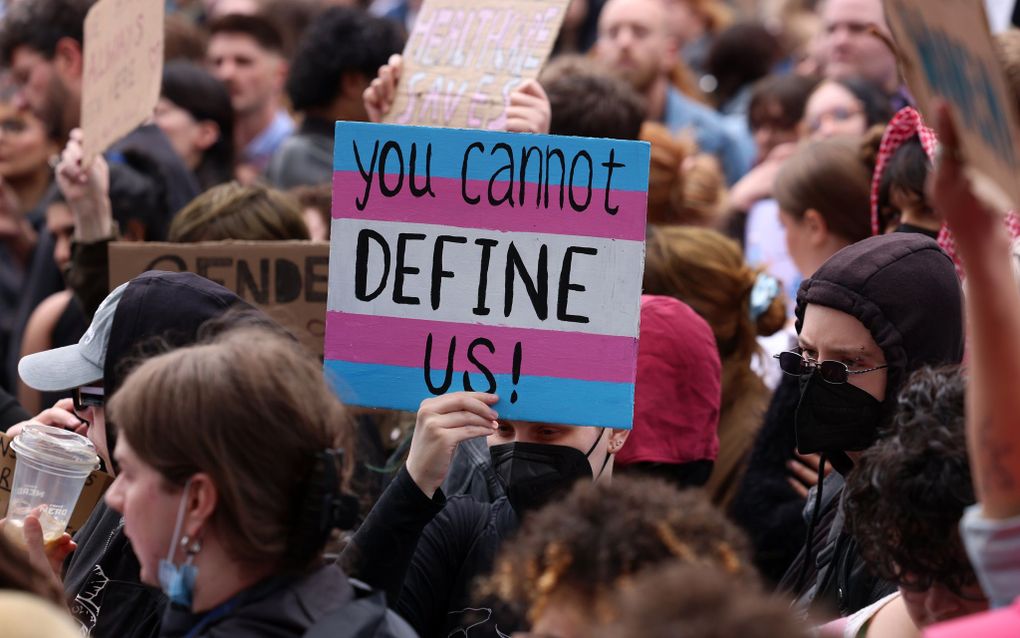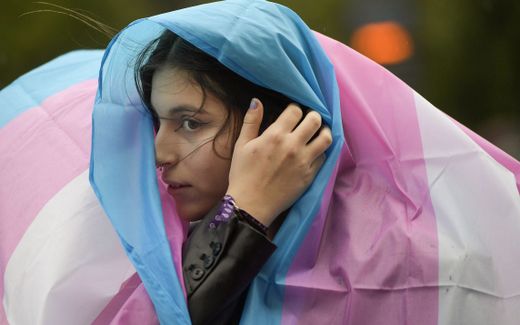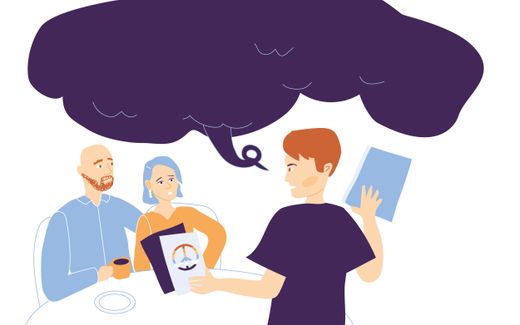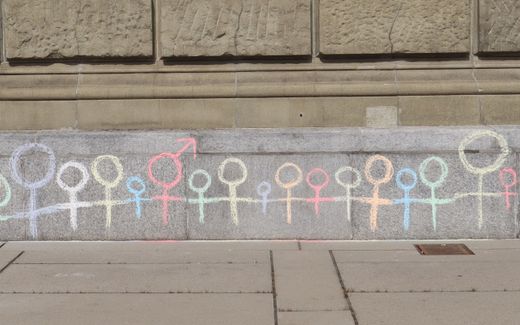Three reasons why the transgender movement seems so attractive to youngsters

Members of the trans community gather outside the UK Parliament in London during a Transgender Liberation demonstration in London, Britain. Photo EPA, Andy Rain
Christian Life
Sophie Griebel knows a lot about gender dysphoria. For a while, she identified as male. How come so many young people fall prey to the transgender message?
Social contagion
One of the characteristics of the transgender community is that everyone can find himself in the description of the transgender diagnose. Do you feel like you're different from others? You might be trans. Do you have difficulty getting through the day? You might be trans. Do you feel uncomfortable with your body? You might be trans.
Sophie Ben James Griebel, who transitioned from female to male and desisted afterwards, describes in her book TransAgenda: Transgender and the cult of the lost children how she was drawn in by this message.
“Maybe you were never wrong – maybe only your body was”
She came across a note that read: “Here, you don't have to twist yourself to fit in. Here, everyone who feels different is welcome. We stand with you, we accept you, and we'll support you on your new path. Maybe you were never wrong – maybe only your body was.”
It sounds like an easy fix for all problems teenagers may have, psychologist Stella O’Malley says in the podcast Gender: a wider lens. This would be attractive to all teenagers who feel uncomfortable in their body, and who are searching for what is wrong with them. “They think, that's what’s wrong with me. If I get that fixed, I'll be okay. And I can really get that. It would have been so attractive to me.
This article is part 1 of a diptych ch on adolescents who identify as transgender.
Symptom
When speaking about social contagion, Stella O’Malley and counsellor Sasha Ayad who is also specialised in gender problems refer to the so-called “symptom pool”, a phenomenon invented by medical historian Edward Shorter. Shorter argued that if a particular symptom is not acknowledged in a culture, there is no concept for it, and no people will come forward saying they suffer from this symptom.
However, when a symptom is acknowledged in a society, it is legitimised and there will be an explosion in numbers in the population of people saying they recognise this symptom. According to Sasha Ayad, this is exactly what happened with transgenderism. “A child will start out with some hard-to-solve distress, whether that be depression, a social rift or anxiety, and start to read about gender dysphoria. Then, they more and more say that the puzzle pieces fall together and they go, “Wow, that is me. Then the child becomes obsessed with the idea that they are transgender and that's why they are distressed.”
Considering all of the above, it is no surprise that social contagion plays an important role in the spread of gender dysphoria. This is also clearly visible in teenagers who struggle with this, says Lisa Littmann, a physician scientist, who also did a lot of research into transgenderism in young adults and teenagers.
In an interview with Quilette, Lisa Littman says that parents described “a very unusual pattern of transgender-identification where multiple friends and even entire friend groups became transgender at the same time”.
Transgender gives a kid status in the class, Littmann notices. Of 39 respondents in her survey, 19 sets of parents said their child received positive benefits after coming out, “including positive attention, compliments, increased status, increase popularity, increased numbers of online followers and improved protection from ongoing bullying.” These effects could have a stimulating effect on others to start identifying as transgender.
Traumas
Every child is born whole, with one mind, body and soul, Sophie Ben James Griebel writes in her book Transgender and the cult of the lost children. In other words, their body, mind, and soul all reflect the same gender. If that is true, transgender people showcase a disconnection that has sprouted somewhere later in their life. And the main trigger for this type of disconnection is trauma, according to Griebel, who underwent gender reassignment and desisted later on.
In her own life, she points out, it was her troubled youth that led her to believe that she was never good enough. And when someone pointed her at the option of transgenderism, she felt relieved. After all, could it be that not her personality was the cause of all her sorrows, but that it was her body?
Griebel believes that gender dysphoria is at the basis no different than self-denial. And this can be triggered by something devastating, such as sexual abuse, but also by something that others consider trivial. Simply said: it could happen to everyone, although the one person is more vulnerable to it than the other.
Many adolescents see gender transition as a healing to their discomfort and pain, says Griebel. However, she also points out that her experience taught her that the opposite is true. “A transition often does not mean healing, but on the contrary: a confirmation of self-rejection, as well as suicide”, the German author writes on her website.
Trans identity is not necessarily the cause of psychological distress, but might be the consequence
Oftentimes, transgender youngsters are victims of their past, Griebel states in her book. She argues that those who do not immediately fit in with society are seen as a problem, while they are actually only reflecting deeper problems in families, educational systems and the therapeutic system. Therefore, Griebel pleads for a more holistic view at transgender problems. Instead of looking for a solution only in the future, people should reflect on the past, she says. Why do children feel broken? What hurt them? Why do they think their body is not good enough?
Trans identity is not necessarily the cause of psychological distress, but might be the consequence, Griebel states. Therefore, it is always necessary to question the deeper layers of emotions, experiences or feelings a child has when he or she identifies as transgender, she adds. Was there anything in the life of the child that brought him or her to this decision?
Online communities
Whoever reads the advice parents of trans identifying youngsters sees the online world as a red thread through the vast majority of them. In the book Lost in Trans Nation, the American psychiatrist Miriam Grossmann asks several of these parents for advice to other parents. And almost all of them warn against unlimited and unsupervised internet use. Why is that?
Many children come out to their parents as transgender after they have spent a lot of time in deep online spaces, says counsellor Sasha Ayad in the Wider Lens Podcast. She and psychologist Stella O’Malley explain that many children attempt to find an answer to their struggles online. There, they find an endless list of posts with “a very simplistic worldview as what could be happening to that young person”, O’Malley says. And not only do these posts, often created by peers, tell children what their problem is, but instead they also offer a solution in trans identification.
These online communities pose great challenges for families of children who identify as transgender, Ayad and O’Malley point out. Many of the stories on online forums talk about transgender people who were rejected by their parents after coming out. “Young persons reading time and time again about this become hyper-vigilant and hyper-sensitive”, says Ayad. “And when you're in that heightened state of fear, you have a radar for any facial expression or tone of voice that is anything less than celebratory. Children are afraid of not having the right response from mum or dad. Parents are so blindsided by announcement, they will respond with “what are you talking about?” genuine shock. Sometimes this can set off a cascade of serious family challenges.”
For parents, this is very distressing, O’Malley adds. They are oftentimes viewed as the enemy, and children distance themselves from them or outright reject them from their lives. Furthermore, it drives children deeper and deeper into the arms of the online world, where they are confirmed in their views. “The trans community invites them to online”, says O’Malley, “because “your own family probably won't understand you because you are trans and they are not.” That feels very divisive.”
Solution
Social acceptance, confidence and a community where they fit in. The transgender community seems to offer it all to teenagers who oftentimes experience stress. A new personality may sound like a good solution in such cases, says Sasha Ayad. “It is very tempting and tricky, even as a therapist, to say, well, if you're confident in this presentation, then that presentation is the solution. But we need to keep in mind that there is a need here that is being met. What we want to do is help nurture this new way of being in all presentations.”
Related Articles











